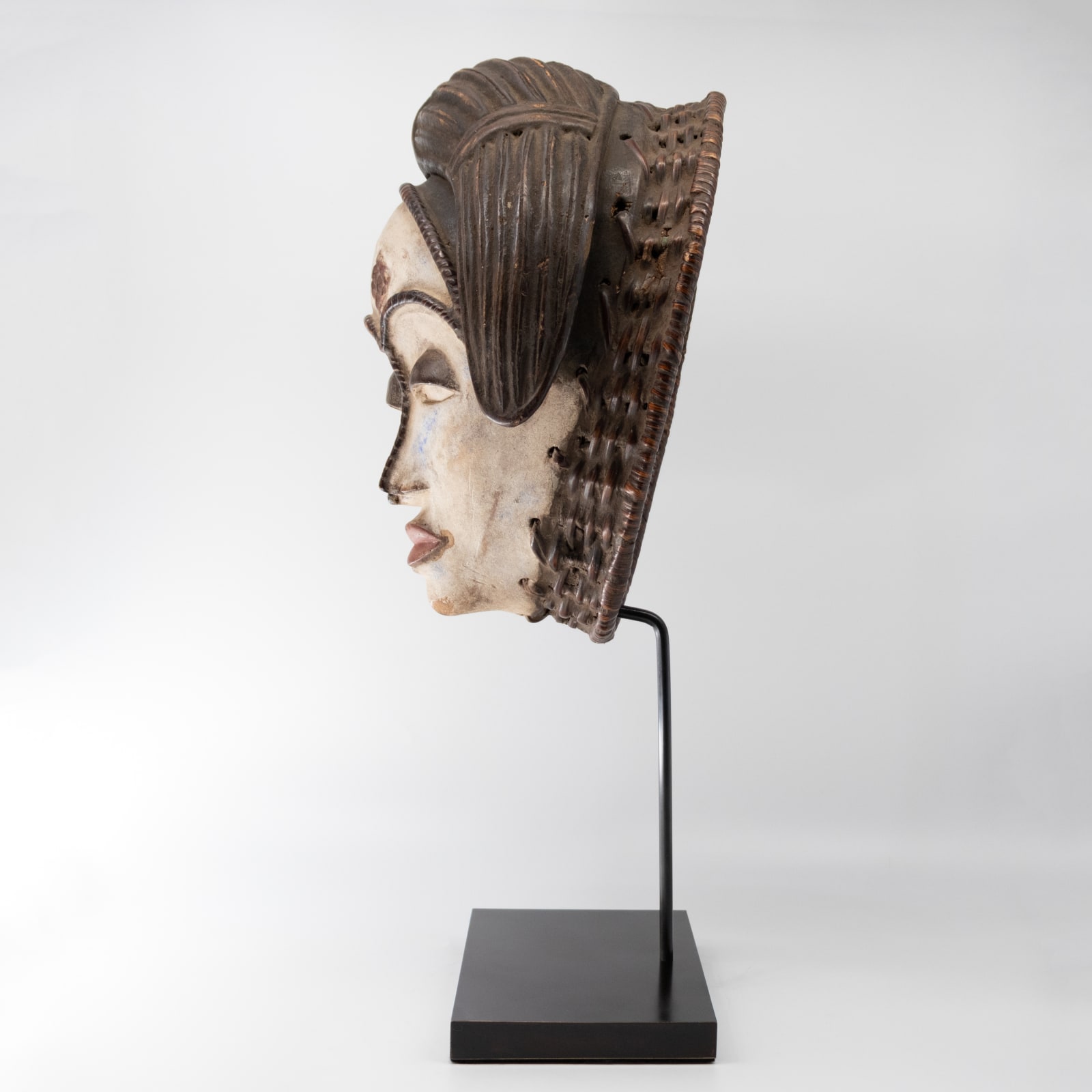Punu Two Faced Mask, 19th - 20th Century CE
Wood
40 x 34 cm
15 3/4 x 13 3/8 in
dimensions given exclusive of mounting
15 3/4 x 13 3/8 in
dimensions given exclusive of mounting
ES.9602
Further images
The tribes of south-west Gabon developed extensive masquerade ceremonies prior to the erosion of traditional ways of life by European forces in the early 20th century. While there were various...
The tribes of south-west Gabon developed extensive masquerade ceremonies prior to the erosion of traditional ways of life by European forces in the early 20th century. While there were various functions for masked entities within village social architecture, the masquerade tradition found its fullest expression in the execution and use of masks during the funerals of important dignitaries. At these funerals, masks such as this – that are designed to portray the ideal female – appear, with the idealised male counterpart, as the spirits of deceased ancestors to guide the newly dead to the hereafter. The mask type is known as “the white masks of Ogowe”, as they were usually painted with kaolin (taken from riverbeds, which was associated with healing and with a spiritual, ancestral realm of existence) and/or white paint to heighten their already serene expressions. Some sources claim that the white paint symbolises the groups’ anti-witchcraft powers, while other scholars hold that the masks' white colouring symbolises peace, the afterlife, and the spirits of the dead. They were usually worn in association with raffia or cloth costumes, and stilts up to about seven feet tall were also worn to heighten their impact. They are technically naturalistic, and echo the aesthetic conventions of feminine hairstyles and general facial proportions.













